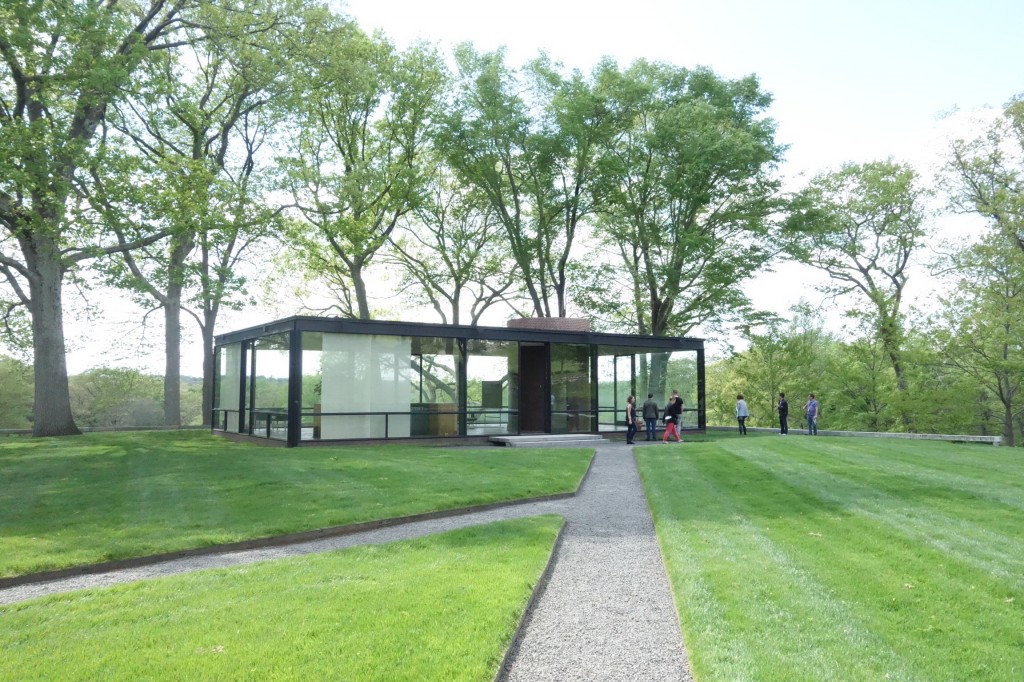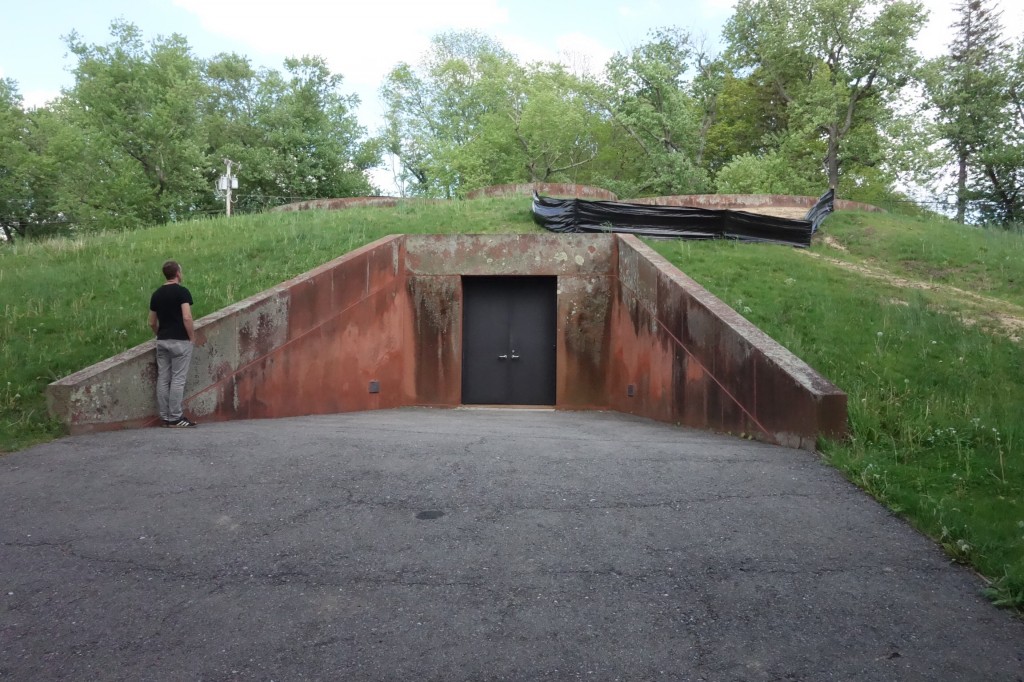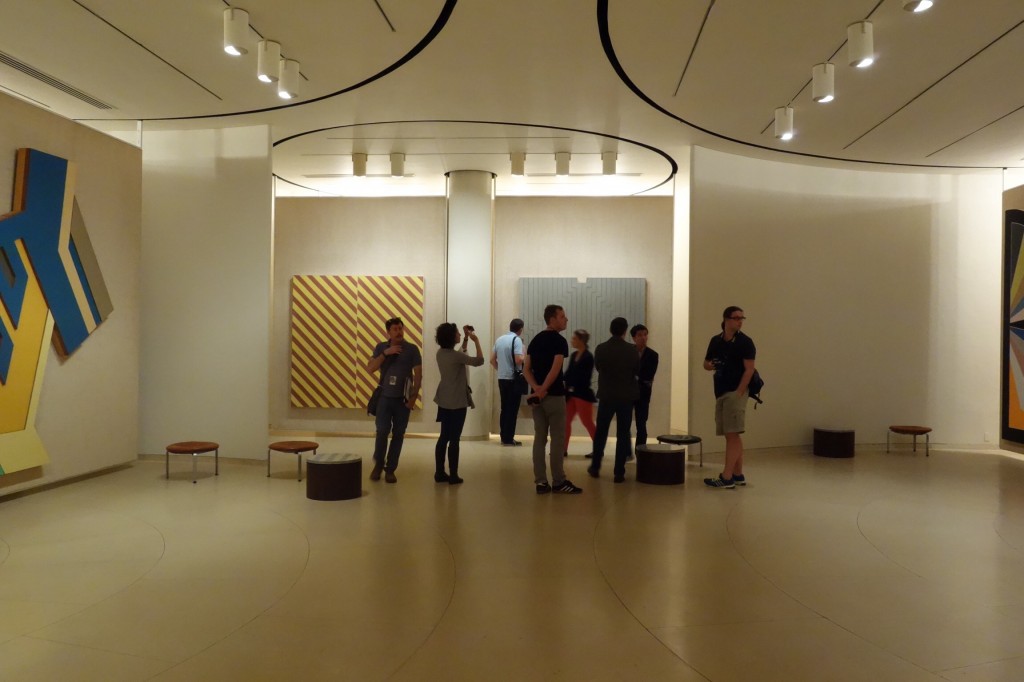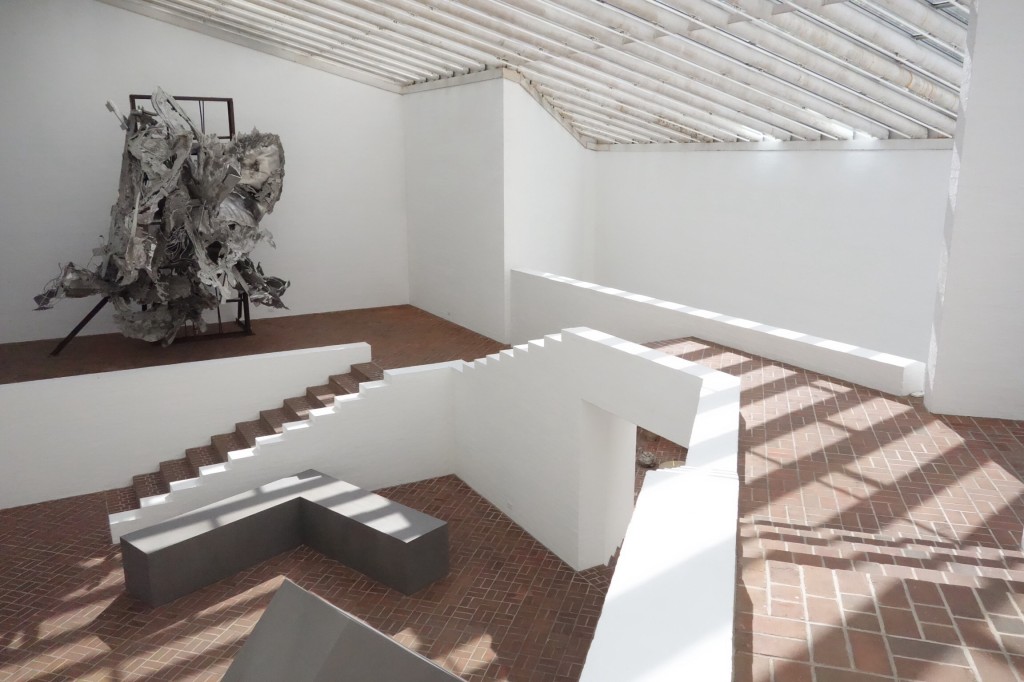Our first Saturday in New York first involved a visit to a TriBeCa apartment designed by Nexus; where our hosts took us through the design process and their impressive collection of art. (Just a side note – one thing that we found particularly interesting is the naming of NYC neighbourhoods – ie TriBeCa = triangle below canal st. Brilliant.)
From the TriBeCa apartment, Phil our Dulux sponsor skillfully managed to manouvre and navigate us through the city in a rented minivan out to New Canaan for a visit to Philip Johnson’s Glass House. Having first visited Mies’ Farnsworth House back in Illinois, we were somewhat skeptical if the Glass House would live up to expectation. Our car trip involved much discussion surrounding the way in which we understood Johnson to be a bowerbird of sorts – not displaying a distinct consistent style within his architecture.
However – despite these thoughts; the Glass House was definitely impressive. In comparison to the Farnsworth house, it was a very grounded building due to the dark red brick flooring sitting within the landscape, and the connection back to the Brick House which is sited adjacent to the Glass House. One thing we noted on our post-visit trip home critique was the Farnsworth House has a greater horizontal emphasis, in which you are always looking outwards. This isn’t the case within the Glass House. It may be due to solid the cylindrical brick service core which pierces the volume, or it may be due to the horizontal window mullions.
One thing we weren’t completely expecting was the other buildings on the Johnson estate. It was evident that Johnson’s wealth and connection with the who’s-who of the art world (notably Andy Warhol) allowed for him to experiment within his architecture.
We decided our favourite building on site was actually the underground art bunker. Entered via a slight decline down into a door set within a mound in the landscape, the art gallery’s clover leaf plan held three large rotating double carpet clad panels of art, with many leafs of panels hiding behind the current fixed installation. After some coaxing, we were allowed to one-by-one tuck our heads around the corner to view a lesser known Andy Warhol piece – similar to his postage stamp pieces yet in muted tones.
The site itself had many follies and small experimental buildings on it, including his library – being on the site itself reinforced Johnson’s seemingly disparate stylistic approach to his work. What did impress us however, given our previous thoughts that he was just ripping off his contemporaries, was that Johnson admitted in some video footage we were shown that he was not as great an architect as Frank Lloyd Wright or Mies or other ‘giants of the day’ and he outrightly admitted that he was a ‘sniffer-arounder’.
Ultimately – he was an experimental architect with the propensity to test both his ideas and ideas of popular stylistic trends of the time – becoming famous due to his connections at that time. We do also have to mention our night out on Saturday – due to an indecisive bunch of very hungry study-tourers we spontaneously selected a restaurant to eat at in the Lower East Side. Cue our foray into a world of crazy aka the Russian Cabaret Tapas bar. Seriously hilarious, and involving many loud sing-a-longs and even more Sun Goddess cocktails, the Russian cabaret tapas bar set the tone of the evening which culminated in a dance off to 80s classics in an underground bar – and finally falling in to bed at 5:30am. Fortunately Sunday was our free day…



